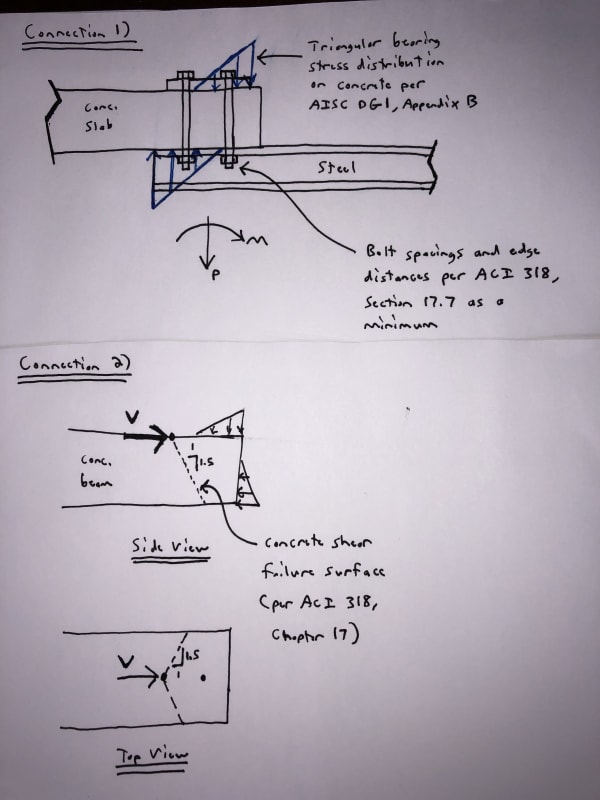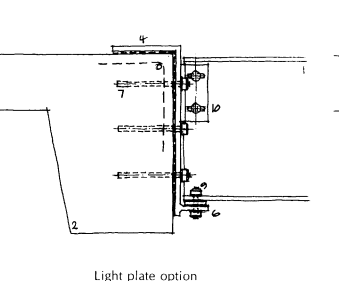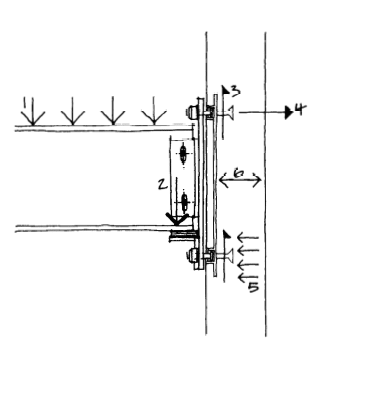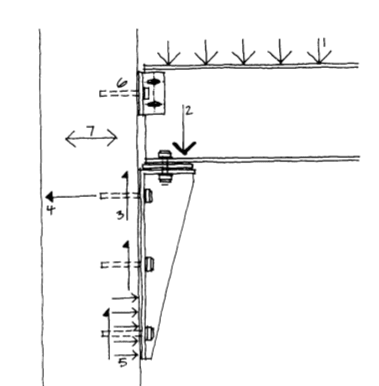Hi,
Do you know any good apps, books and papers dealing with the design of nonconventional steel to concrete connections? By "non conventional" I mean connections that are not currently handled by programs such as Hilti Profis Engineering or Peikko Designer. Two examples I face very commonly are:
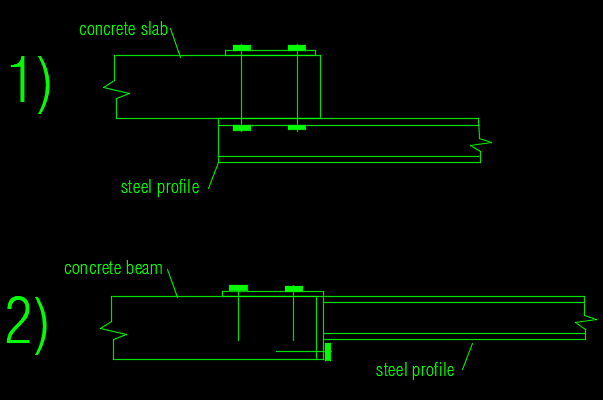
Your opinions are welcome!
Thanks!
Do you know any good apps, books and papers dealing with the design of nonconventional steel to concrete connections? By "non conventional" I mean connections that are not currently handled by programs such as Hilti Profis Engineering or Peikko Designer. Two examples I face very commonly are:

Your opinions are welcome!
Thanks!

